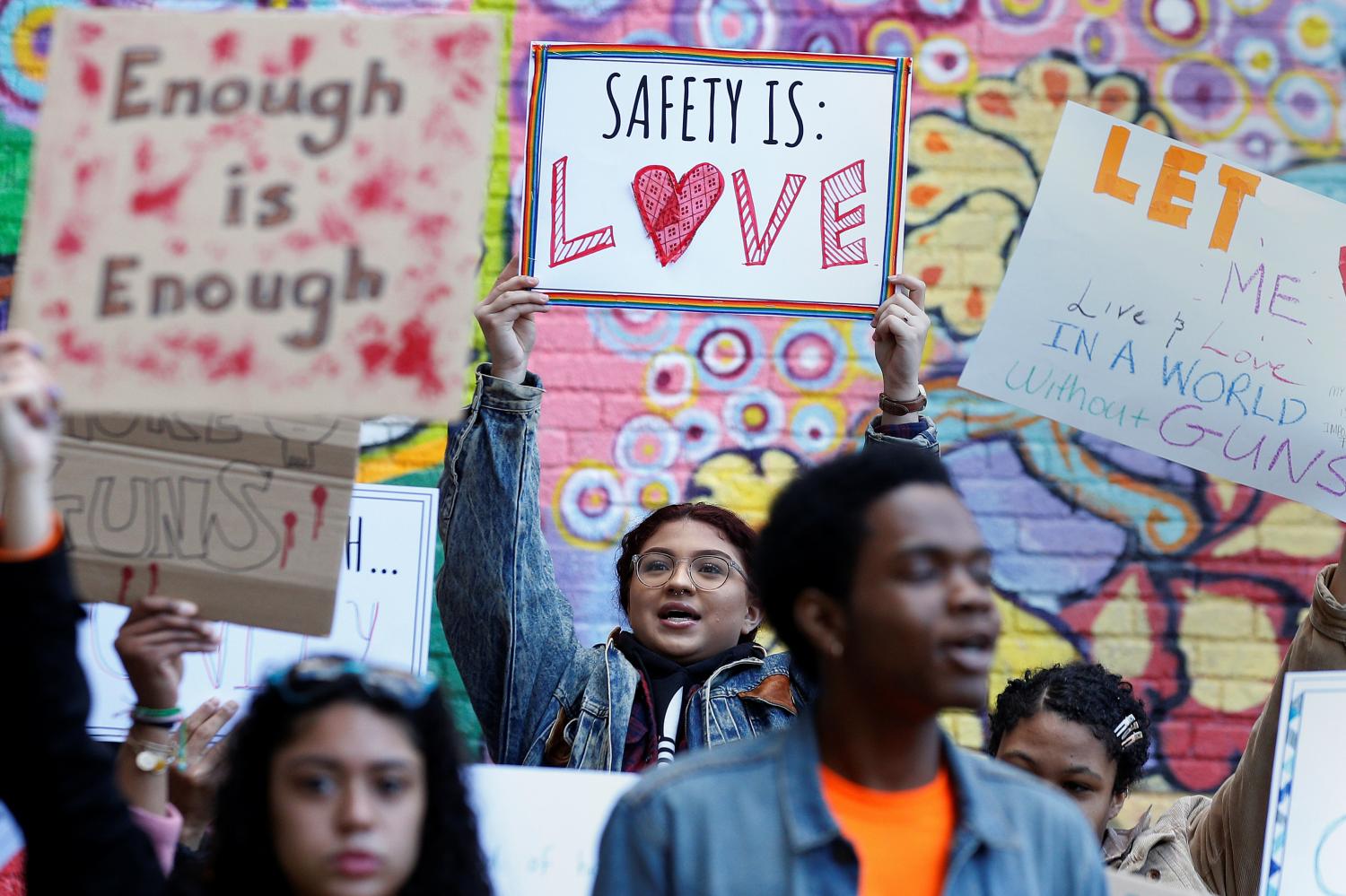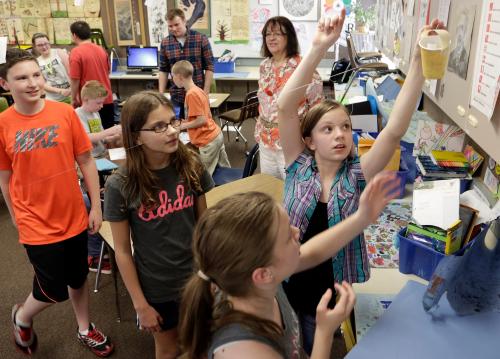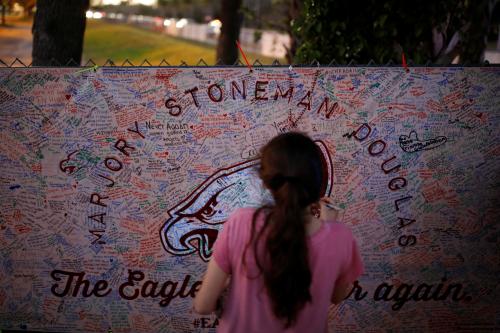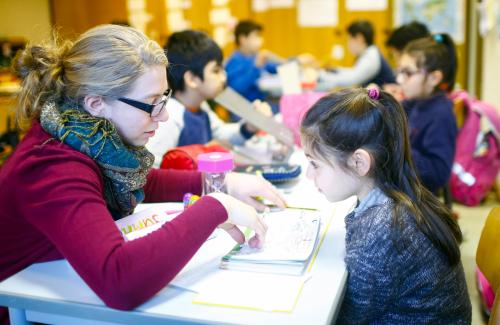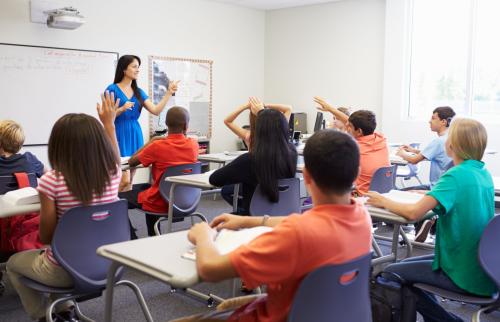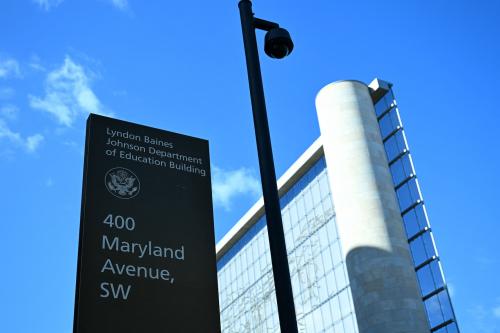This post originally appeared in The Hechinger Report; the version below has been lightly edited for style and content.
“In less than 18 years, we have already seen more deaths related to school shootings than in the whole 20th century,” said Antonis Katsiyannis, Clemson University researcher and the lead author of a 2018 study on school shootings. “One alarming trend is that the overwhelming majority of 21st-century shooters were adolescents, suggesting that it is now easier for them to access guns, and that they more frequently suffer from mental health issues or limited conflict resolution skills.”
The vast majority of school shooters are white men; there’s apparently something about masculinity—seeing one’s body as an instrument of power and dominance—that contributes to a profound disconnectedness that can lead to violence when students are withdrawn from their teachers, students, and family members.
But the rise of mass shootings in schools has scrambled our thinking about what ultimately keeps our children safe. The problem isn’t that schools aren’t safe enough, but that students don’t feel secure enough in school communities. Emotionally healthy, well-adjusted youth don’t tear through their classrooms armed with weaponry. And we can do our part in keeping schools safe by helping kids feel a sense of belonging, of welcome, and making them feel comfortable enough to seek help when they need it. (Of course, we can also do our part by passing comprehensive gun reform, but that’s a whole other column.)
This feeling of security is what the Centers for Disease Control and Prevention (CDC) calls “school connectedness,” which it defines as “the belief held by students that adults and peers in the school care about their learning as well as about them as individuals.” When students feel more connected to school, the CDC says, they are more likely to engage in healthy behaviors and succeed academically.
Yet the discourse on prevention has been twisted to focus on whether or not school personnel should have guns and be trained to use them. In July, President Donald Trump and his Federal Commission on School Safety issued a call to “harden” schools, and making sure “our schools are safe and secure, just like our airports, stadiums, and government buildings.” His administration plans to do this in part by providing funding for educators to receive firearms training and allowing them to bring weapons into the classroom for protection. That language echoed the rhetoric of NRA CEO Wayne LaPierre, who said during a speech in February that schools “must come together to implement the very best strategy to harden” themselves. If the administration takes more of the NRA’s suggestions, I guess this would include replacing outside shrubbery with “thorn-bearing and sharp-leaved plant species,” which the NRA recommended in a 2013 report.
Efforts to harden our schools have already begun in states such as Florida, where a new law could result in up to 37,000 new armed staff. A 2017 Bureau of Labor and Statistics report found that Miami already has the highest concentration of security guards of any U.S. metro, except Las Vegas. A CityLab analysis found that the United States now has nearly as many security guards as teachers, and the growth in guards has been more than double that of teachers since 2007.
As weapons and guards enter schools in unprecedented numbers, the educational environment becomes especially hostile to students of color, who are punished more often and more severely than their white counterparts. The geographic concentration of guards is particularly concerning: Of the top 10 metropolitan areas with the highest concentration of security guards, four of them have a majority-black city (Memphis, New Orleans, Baltimore, and Birmingham) within their borders. By comparison, whiter metros such as Portland, Seattle, Salt Lake City, and Minneapolis have some of the lowest concentrations of security guards. As economists Samuel Bowles and Arjun Jayadev wrote in a New York Times blog post about inequality, students—especially students of color—may soon be pledging allegiance to “one nation under guard.”
Some organizations are taking a decidedly different approach to improving school safety. On Dec. 5, the philanthropic group Communities for Just Schools Fund is set to release a new report that will show educators how to foster connectedness in schools. The group will advocate for investment in teaching, conflict resolution, a diverse teaching staff, anti-bias training for educators, as well as mental and emotional health supports.
But why is connectedness so important? A 2003 study by researchers Adena Klem and James Connell of the nonprofit Institute for Research and Reform in Education found that a whopping 40 to 60 percent of all students are “chronically disengaged” from school, meaning that students don’t perceive themselves as having a strong support system within their educational environment. The degree to which a student feels connected to their school can determine a host of other outcomes. The 2009 CDC study found that students who felt more connected to their schools had higher grades and test scores; dramatically lower rates of substance use; attended school more regularly; and were much less likely to engage in violence. The CDC outlines four main pillars of school connectedness: adult support, positive peer groups, a welcoming school environment, and student commitment to education.
Schools that choose to focus on these pillars reap the rewards. Just look at Sioux Falls, South Dakota, where one elementary school was able to increase attendance in just three years by rolling out the use of an app named KinVolved. The program allows teachers to communicate and engage with families directly through text messages with praise or concerns, and the software can even translate 50 languages in real time. A social studies teacher in the Bronx saw a marked difference in student attitudes toward learning after instituting a welcoming learning environment—he shifted to a more culturally relevant curriculum, beginning his black history classes with Ancient Egypt and emphasizing that his students are “the descendants of kings and queens, not descendants of slaves.” And a middle school in Texas was able to reduce suspensions by 62 percent in just one year after implementing a comprehensive “restorative discipline” program, which focuses on face-to-face discussion circles that engage students with teachers and peers and aim to understand why students act out.
Don’t get me wrong: We need the proper authorities to address immediate threats. But guns should never be the core solution to our safety problems. Approaches that focus on connectedness create healthier and higher-achieving students. So rather than hardening our schools, we need to do the hard work of forging quality relationships with our students.
The author would like to thank Alex Thomas for his contributions to this post.
The Brookings Institution is committed to quality, independence, and impact.
We are supported by a diverse array of funders. In line with our values and policies, each Brookings publication represents the sole views of its author(s).

